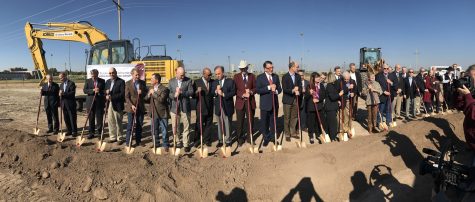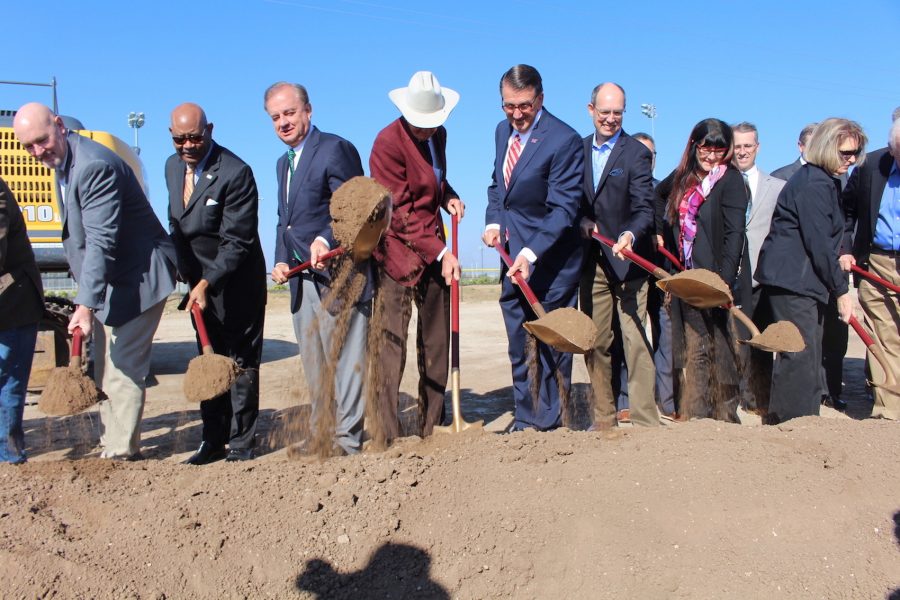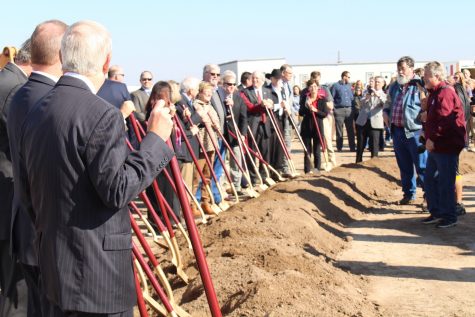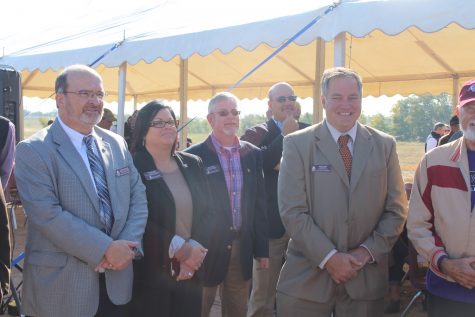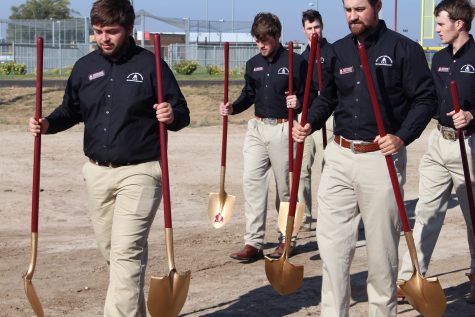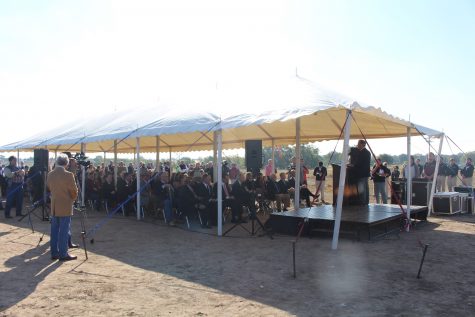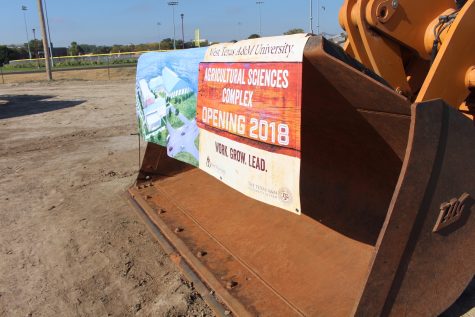WTAMU Breaks Ground on Agricultural Sciences Complex
WTAMU President, Dr. Walter Wendler officially breaks ground at the site the future Agricultural Sciences Complex.
October 14, 2016
The morning of October 14 marked the beginning of a bright future for West Texas A&M University’s College of Agriculture and Natural Science. Bolstered by the college’s continual growth over the past decade and a half, the plans to move forward on the new state-of-the-art Agricultural Sciences Complex came to a head at an official groundbreaking with numerous members of the Texas Legislature and university officials in attendance.
“Through the Texas legislative system, a state TRB (tuition revenue bond) was passed which allows institutions to garner state resources for infrastructure,” said Lance Kieth, the department head of agricultural sciences. “Each university gets to identify its needs; our ag program has grown exponentially over the last 15 years…and the university chose a new ag complex as the TRB. Those state monies are being appropriated to WT for the building of this facility. We will now have a place for industry to come and we will now be able to do some very robust-type trainings and workshops for employees.”
The Agricultural Sciences Complex, which will be located at the intersection of West Texas A&M Dr. and Russell Long Blvd., will span over 140,000 square feet. The complex will be highlighted by three main components: a 500-seat multi-purpose arena, the Piehl-Schaeffer Pavilion in which students can practice showing and evaluating livestock, and a state-of-the-art meat lab consisting of innovative features all designed to heighten the learning experience of students.
“This will be the newest meat science laboratory in the country,” said Ty Lawrence, professor of agricultural sciences. “It will provide the state-of-the-art opportunity to teach students the most cutting edge mechanisms in food safety applications to convert live animals into edible meat products.”
The meat lab will contain interactive learning aspects, including a classroom containing a rail attached to the ceiling where carcasses can be moved in and out of refrigeration for students to study and examine as needed. This hands-on approach tailored to the needs of the students is nothing new to West Texas A&M.
“For us students, we are more hands-on anyway,” said Hope Sorrells, a graduate student studying agriculture with an education emphasis. “This new complex is going to help us be more hands-on than ever before which is going to help us in the long run, especially those meat-lab-science students who are getting a great facility which will benefit not only them, but the university as well.”
The groundbreaking marked a new era for current and future students. The $48 million complex is expected to not only impact enrollment at West Texas A&M, but it is also expected to impact the community in a very positive manner.
“What we are bringing together is a very high-quality agricultural program with a very high quality veterinary program,” said Eleanor Green, dean of the Texas A&M University College of Veterinary Medicine and Biomedical Sciences. “When we combine these two stars, this is going to do nothing but benefit the students, the sons and daughters of the Panhandle. We are going to be able to take those young people that grew up on ranches, who have the work ethic and passion for veterinary medicine, and let them realize their dreams at the university level.”
According to Green, the impact of the new complex will be immediate. The current enrollment in the college of Agriculture and Natural Sciences stands at just below 800 students and that number is expected to reach new heights. The complex is expected to be completed in July 2018.
